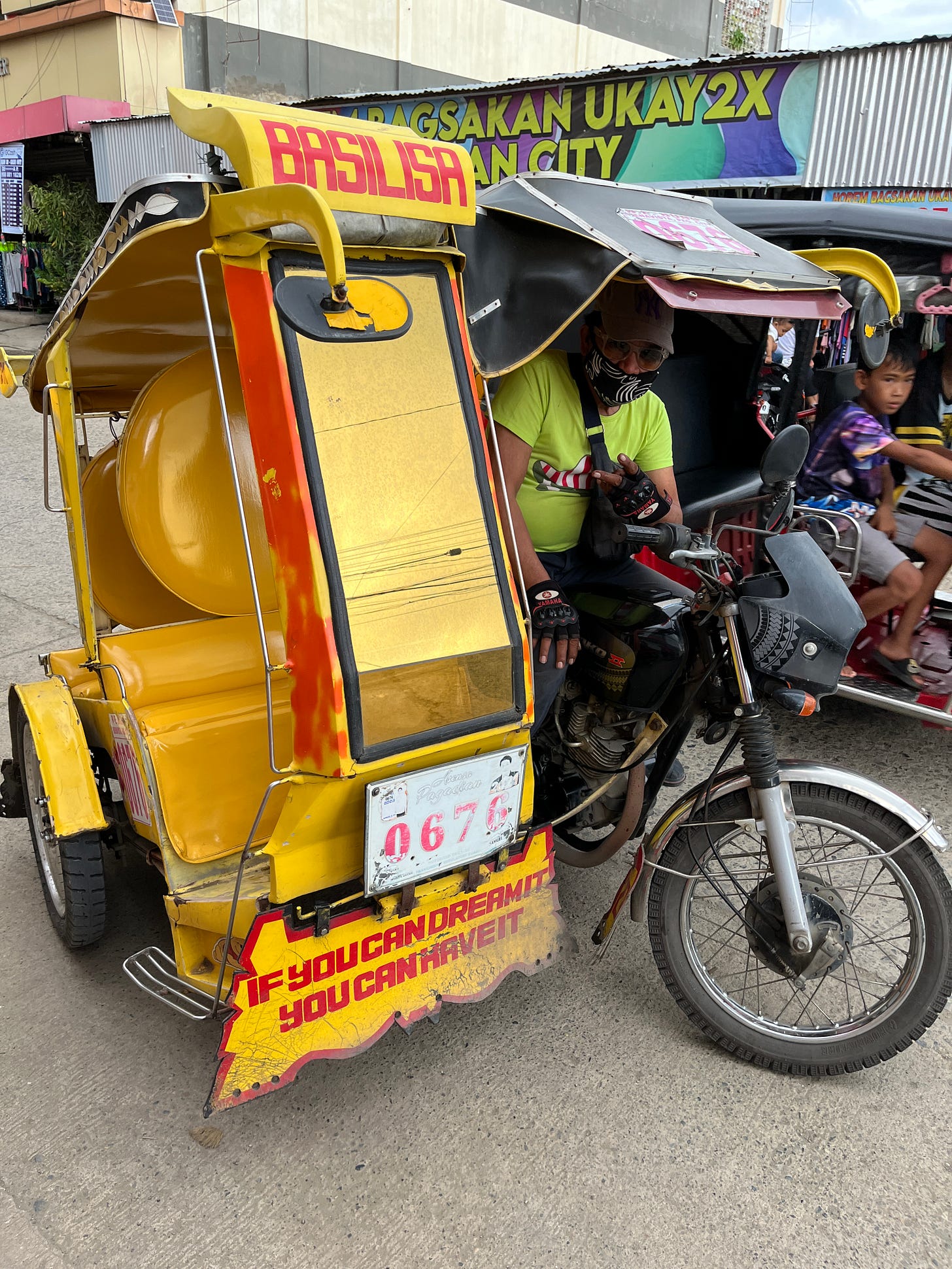Are tricycles in Pagadian City about to become extinct?
(Or how an Indian-made, locally assembled vehicle may reshape public and private transport inside and outside Mindanao)
Pagadian, a city in Western Mindanao that is a two-hour flight away from Manila, is known for the tilted passenger seats of tricycles, its main mode of public transport. [See: Pagadian tricycle]
Inclined seating is supposedly a safety feature, according to a native-born resident, a regular commuter who has never owned a car.
This awkward, if cramped arrangement — perhaps similar to an amusement park ride — keeps the tricycle from tumbling over forward or keeling over backward when traveling on the city's sloping terrain, the resident explained.
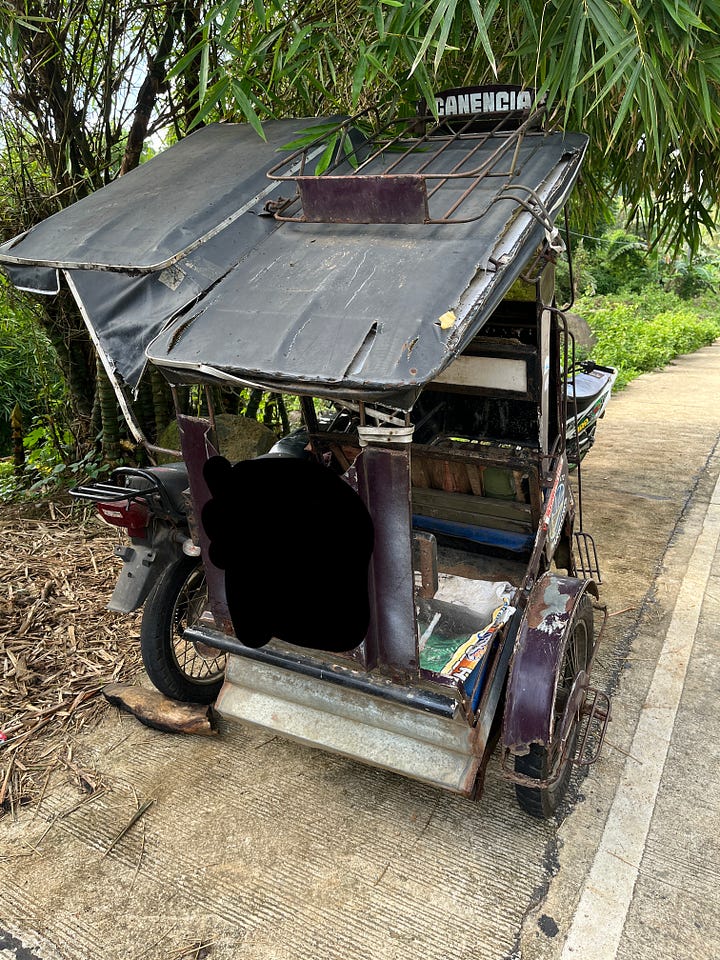
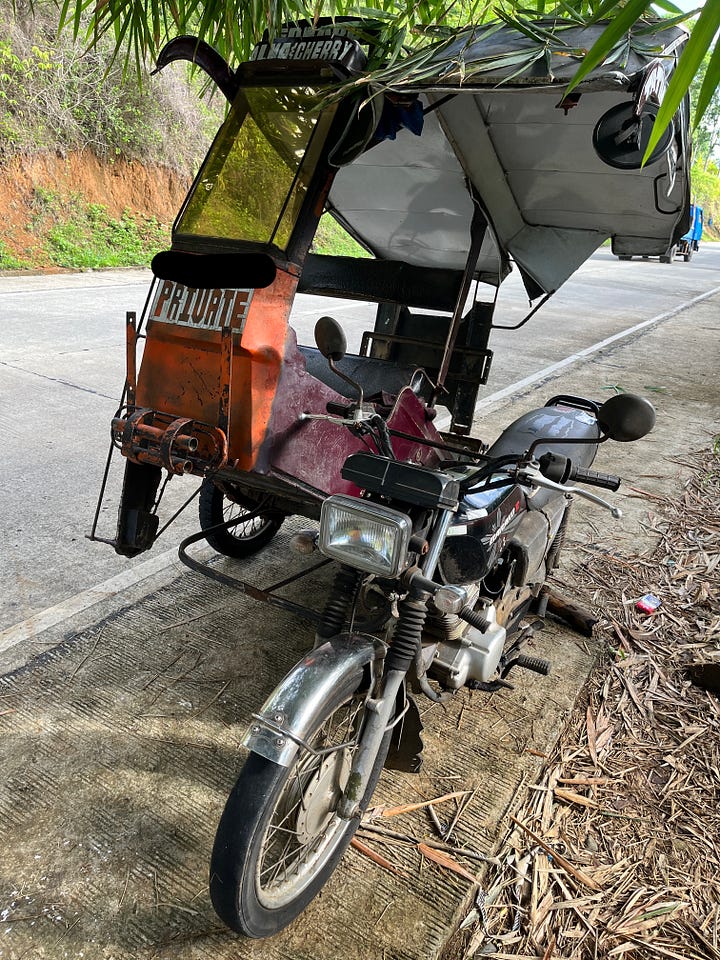
With inclined seats, the Pagadian tricycle is able to navigate the city's main thoroughfares, many parts of which are hilly. These include F. J. Pajares Avenue, which hosts an array of restaurants, and the route to Fogline 360°, a popular tourist attraction that offers a view of the city proper.
However, despite being part of the city's character, only less than a hundred of these tricycles are on the road, according to a driver who owns one such unit.
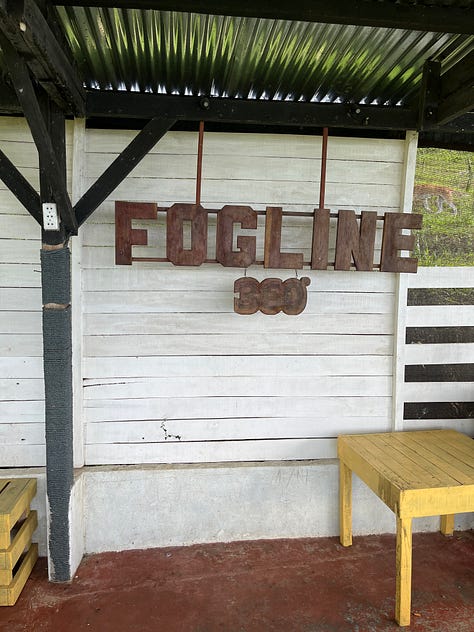
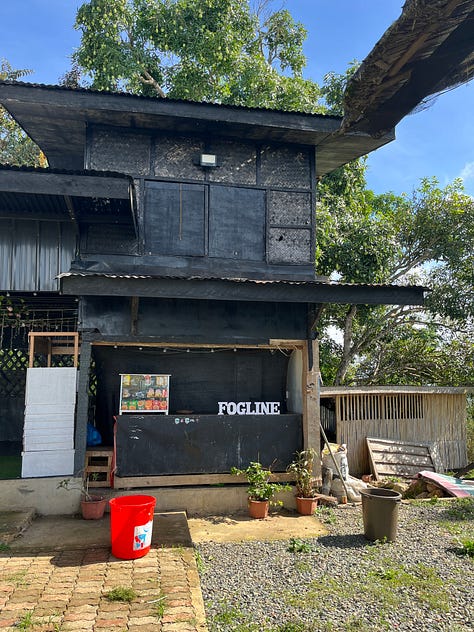

Public transport in Pagadian has supposedly been taken over by Indian-made Bajaj tricycles, called bao-bao (Visayan for turtle) in the city and other areas in Mindanao and bukyu in Tagaytay City in Luzon. [See: Bukyu] (This trend — if it is indeed a trend — is arguably similar to what has taken place after the Philippines implemented its jeepney modernization program. Since operators have been required to upgrade their fleets, many traditional jeepneys have been replaced by imported mini-buses. As a result, local manufacturers point out that they have been neglected by government in favor of importers, despite proving that their vehicles complied with modernization standards while staying faithful to the design and concept of traditional jeepneys. Jeepneys are regulated by the Land Transportation Franchising and Regulatory Board, a national government agency, while tricycles, including Bajaj's three wheelers, are subsumed under local governments.)
Bajaj tricycles, both legit and colorum
Bajaj tricycles are locally assembled and sold by Trimotors Technology Corp., a company founded by Jesus V. del Rosario who also established Kawasaki Philippines and what is now Panasonic Philippines. Trimotors has four assembly plants in Davao, Cagayan de Oro, Pagadian, and (presumably) its headquarters in Muntinlupa. [See: Del Rosario, Trimotors]
Besides featuring regular, front-facing seats, the tricycle’s passenger cabin has more legroom and provides more stable and comfortable rides.
A basic Bajaj model can fit five passengers — three squeezed at the back and two on both sides of the driver in front.
Light early morning traffic on a main road of Pagadian City feature several Bajaj tricycles.
With a full tank of gas costing roughly PhP 600, the Bajaj tricycle can travel to Ozamis City from Pagadian and back and have some fuel left over, said Roger (not his real name), a newly-minted Bajaj driver. (For comparison, one-way bus fare on the same two-hour route is around PhP 300.)
Roger charges a minimum of PhP 30 per passenger and is able to meet his fare goal of PhP 1300 daily. (Presumably, that is enough to cover his family's living costs as well as his vehicle's amortization of PhP 7400 monthly.)
Roger is one of the growing numbers of Bajaj tricycle drivers in Pagadian who make a living by serving the city's commuters.

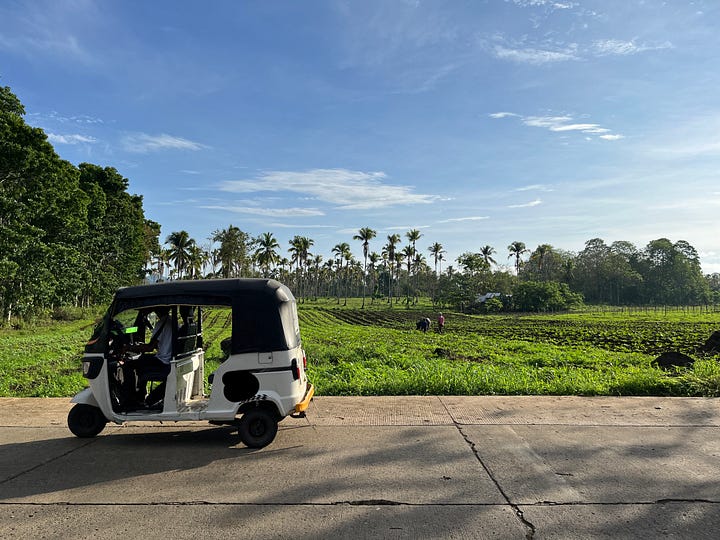
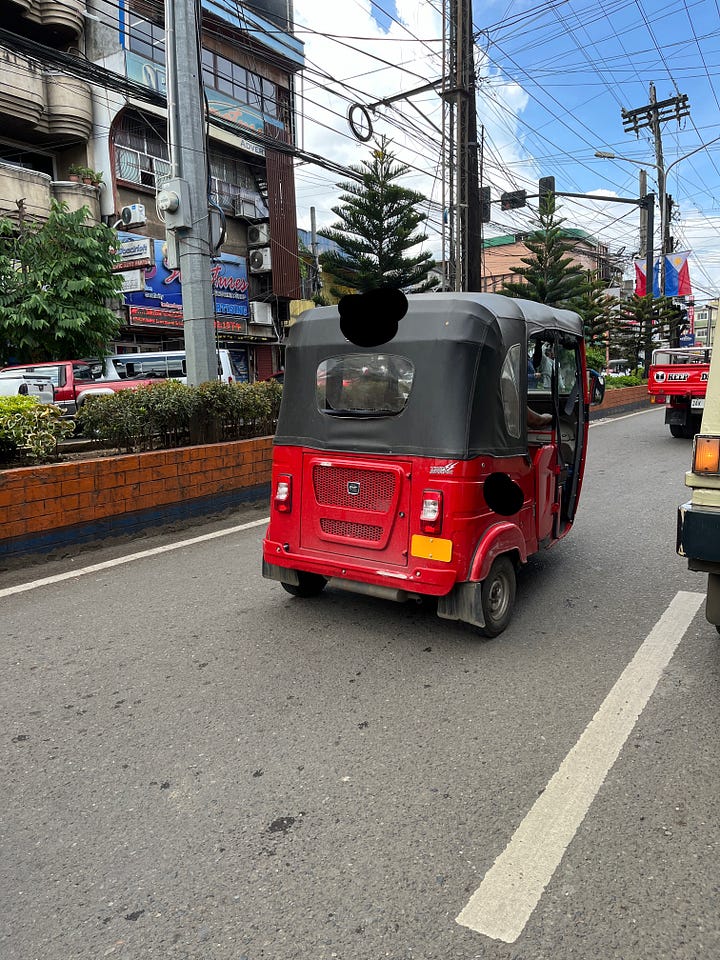
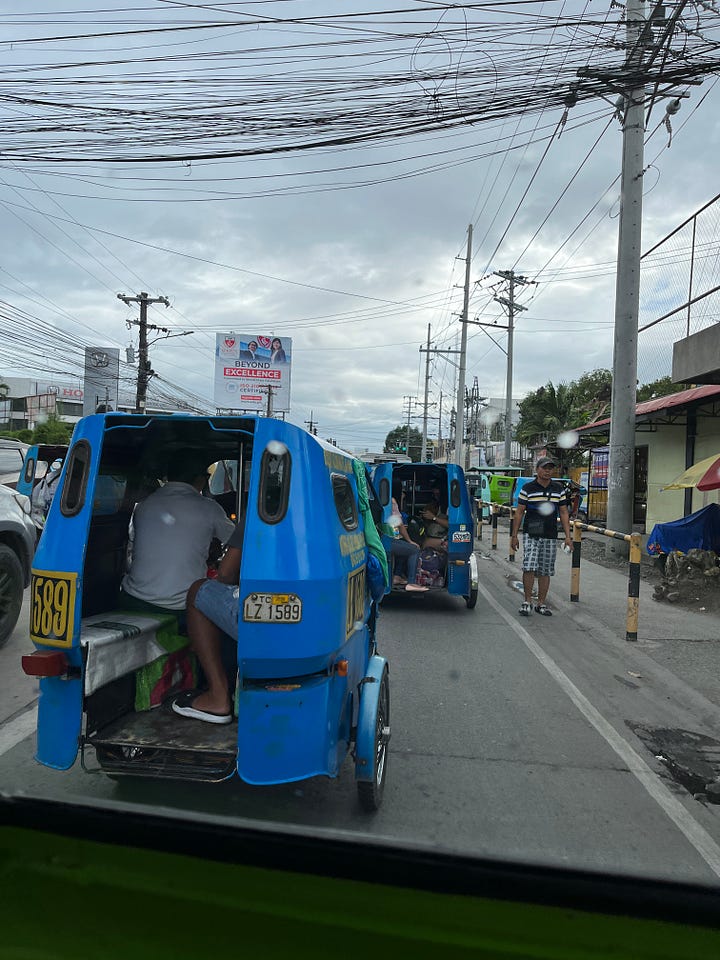
As of this writing, some 5000 Bajaj tricycles are estimated to ply routes in Pagadian; more, if privately-owned vehicles — including those without franchises, called colorum, are included. (These colorum vehicles can be identified by the absence of plates on the front and rear of the tricycles. Separately, regular public utility tricycles in General Santos City, nearly 400 kilometers away from Pagadian, are colored blue. Colorum ones are painted the same color, allowing drivers to ferry commuters. To avoid penalties if apprehended, colorum tricycle drivers in General Santos will claim that their vehicles are privately-owned and that their passengers are either their wives, children, or relatives, a resident said.)
A different transport icon in Cagayan de Oro
Meanwhile, four hours away by bus from Pagadian is Cagayan de Oro City, which has its own unique tricycle called the Motorela.
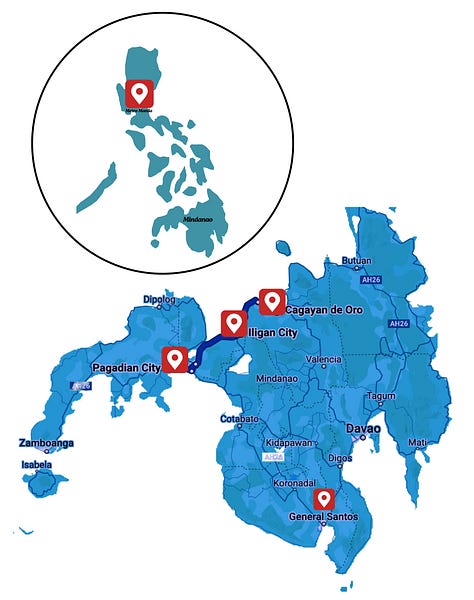
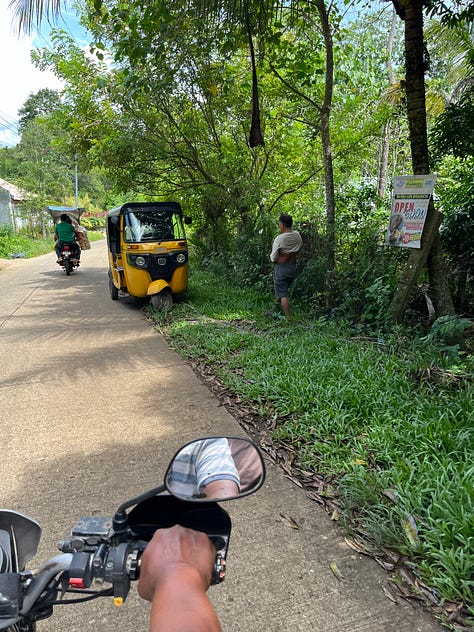
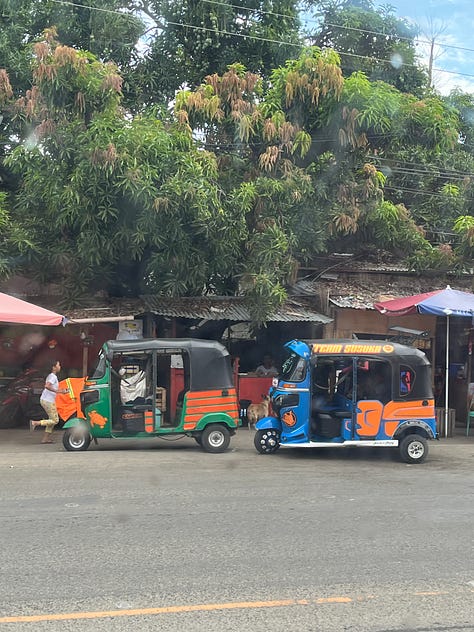
Like the Bajaj tricycle, the vehicle has “an enclosed cabin” except that it has four wheels, “the two wheels of a motorcycle, and an additional wheel on each side. It has the capacity to carry more passengers than the traditional tricycle.” [See: Motorela]
Theoretically, each motorela is only allowed to serve the commuters of a given city district, according to a taxi cab driver interviewed in Cagayan de Oro who previously drove a motorela for a living. Because of this arrangement, commuters going from one district to another will need to get off at Cogon market in the city's downtown area — where all motorela routes intersect — and transfer to another motorela that serves their final destination.
But then again, that rule is supposedly more observed in the breach.
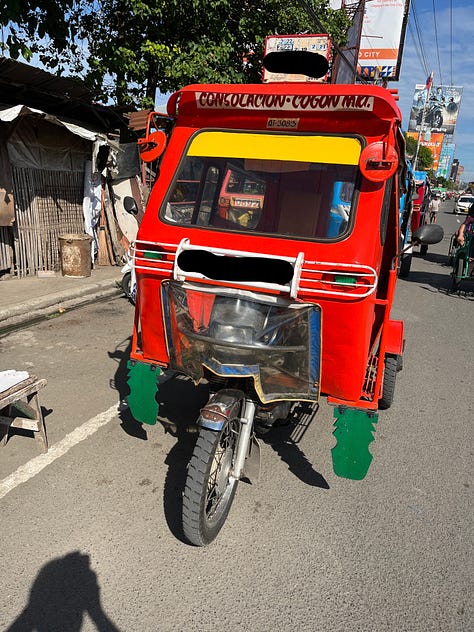
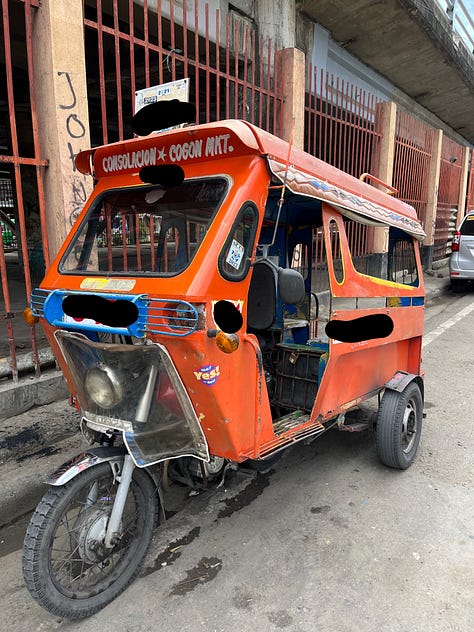
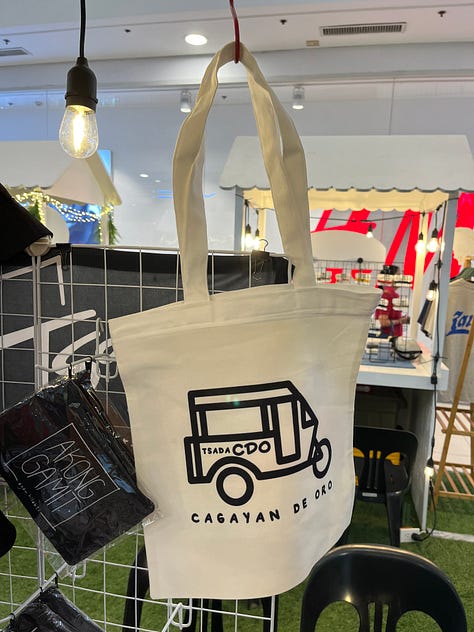
At night, motorelas can supposedly go anywhere — even on highways where they are banned — as long as the driver and passenger agree on the price and the destination, the driver said.
“[Motorelas] can cater to those who can't afford cab rides,” the driver said.
However, unlike Pagadian and other cities, Cagayan de Oro isn't likely to allow Bajaj tricycles to be used as public utility vehicles, the driver said.
Passengers seated on either side of Bajaj tricycle drivers risk leg injury because their limbs are exposed, he said, overlooking the fact that the motorela has the same disadvantage.
But his observation — valid or not — hasn't discouraged government from preventing the adoption of Bajaj tricycles.
Gov't order reclassifies Bajaj tricycle
In November 2020 — when travel was still discouraged to avoid COVID-19 infection and transmission — the Land Transportation Office (LTO) released an order that reclassified Bajaj tricycles and similarly-designed vehicles, according to a report by MotoPinas.com. [See: LTO reclassification]
The reclassification gave local governments the discretion to allow Bajaj tricycles to travel on roads where they were previously banned (under presumably a previous category which lumped them together with regular tricycles), the same MotoPinas.com report said.
“This new development in three-wheeler classification was heavily lobbied by Trimotors Technology Corporation, distributors of the Bajaj RE and Maxima three-wheelers,” the MotoPinas.com report said. “Top executives [have been] continuously coordinating with different government organizations to... allow their vehicles — primarily sold as private vehicles — to be driven on more roads.”
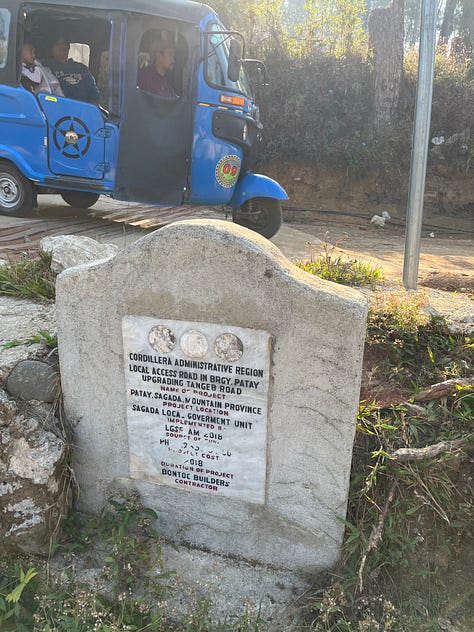



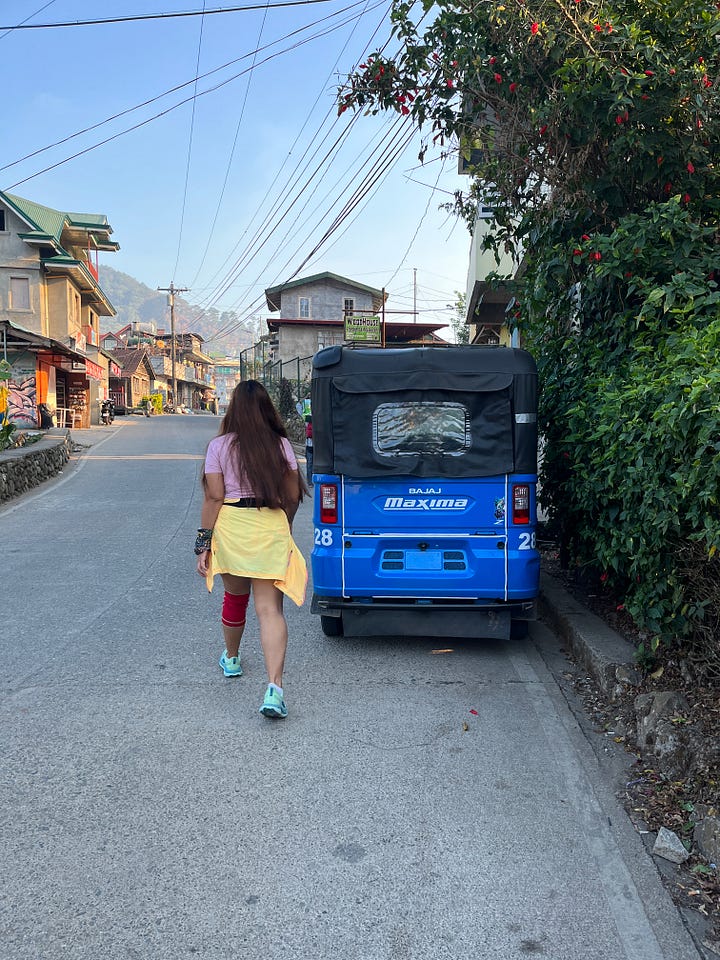
The reclassification of Bajaj tricycles fits in with the company’s goal of providing “a better tricycle” for Filipinos and in becoming “the nationwide leader…in next-generation modes of land transportation.” [See: Bajaj]
It remains to be seen whether many Filipinos will buy Bajaj tricycles with the intention of using them as private cars.
But there is no doubt that the Indian-made tricycle has already proven its mettle as a public utility vehicle in Mindanao, (perhaps even in the Visayas) and Luzon, including Antipolo City and Sagada, Mountain Province.
With sales reaching more than 100,000 units across the country since 2014, or at least according to Trimotors, the Bajaj tricycle isn't likely to face any significant challengers soon.
However, can the same thing be said for regular tricycles, inside or outside Pagadian?



